All About Undercoat | What Is Undercoat | What Does Undercoat Paint Do | Why Use Undercoat | Difference Between Primer and Undercoat
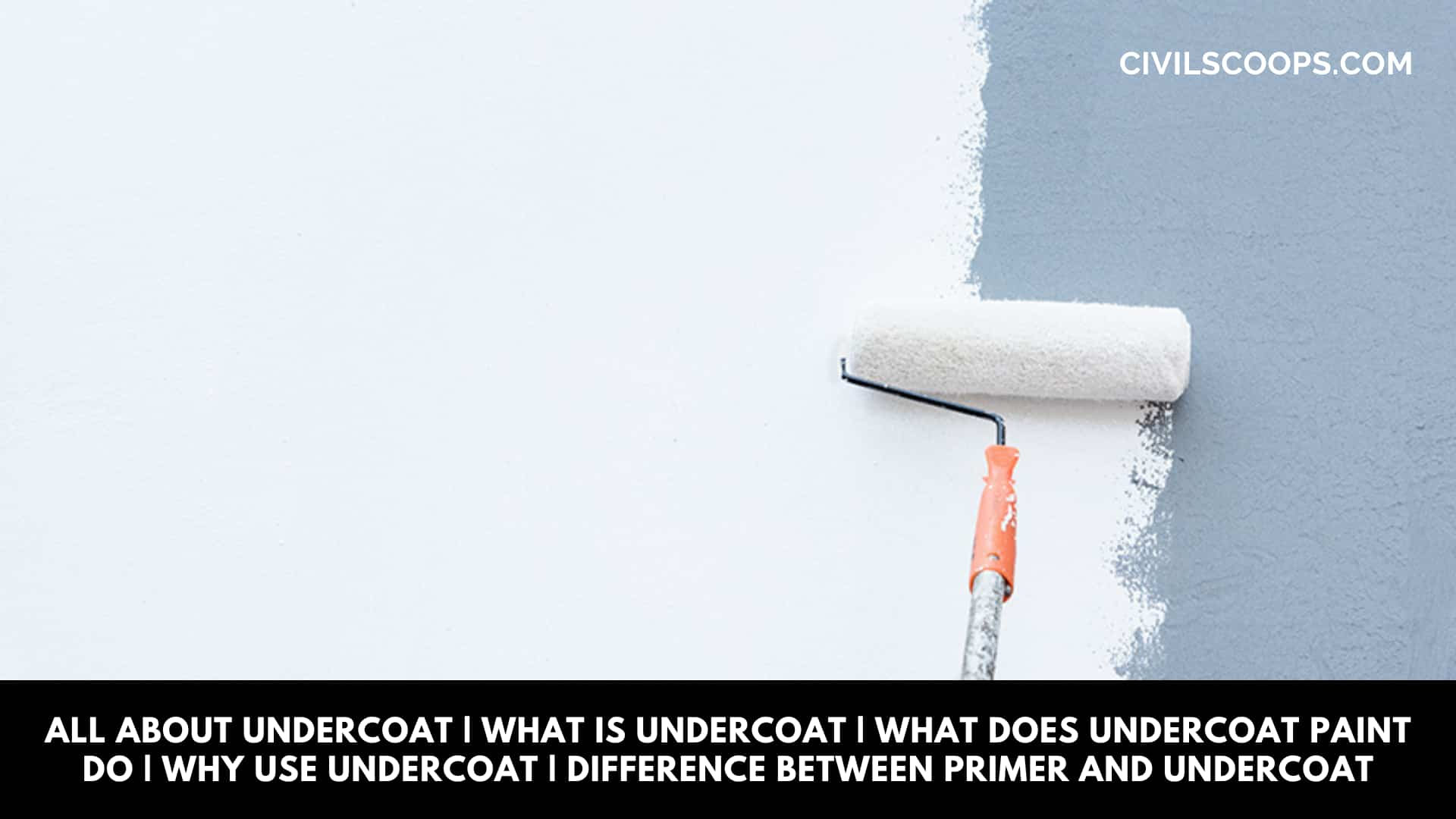
Table of Contents
Introduction of Undercoat
- Paint plays a crucial role in the appearance of the structure. Paint also protects the structure from the external agencies.
- Painting enhances the aesthetical view of the structure. It is very necessary that the painting of the home should be done properly because it helps to maintain the overall condition of the structure and protect it from the moisture and steel components.
- In this article, we will learn about What is an undercoat, functions of undercoat and how to apply the Undercoat.
What Is Undercoat?
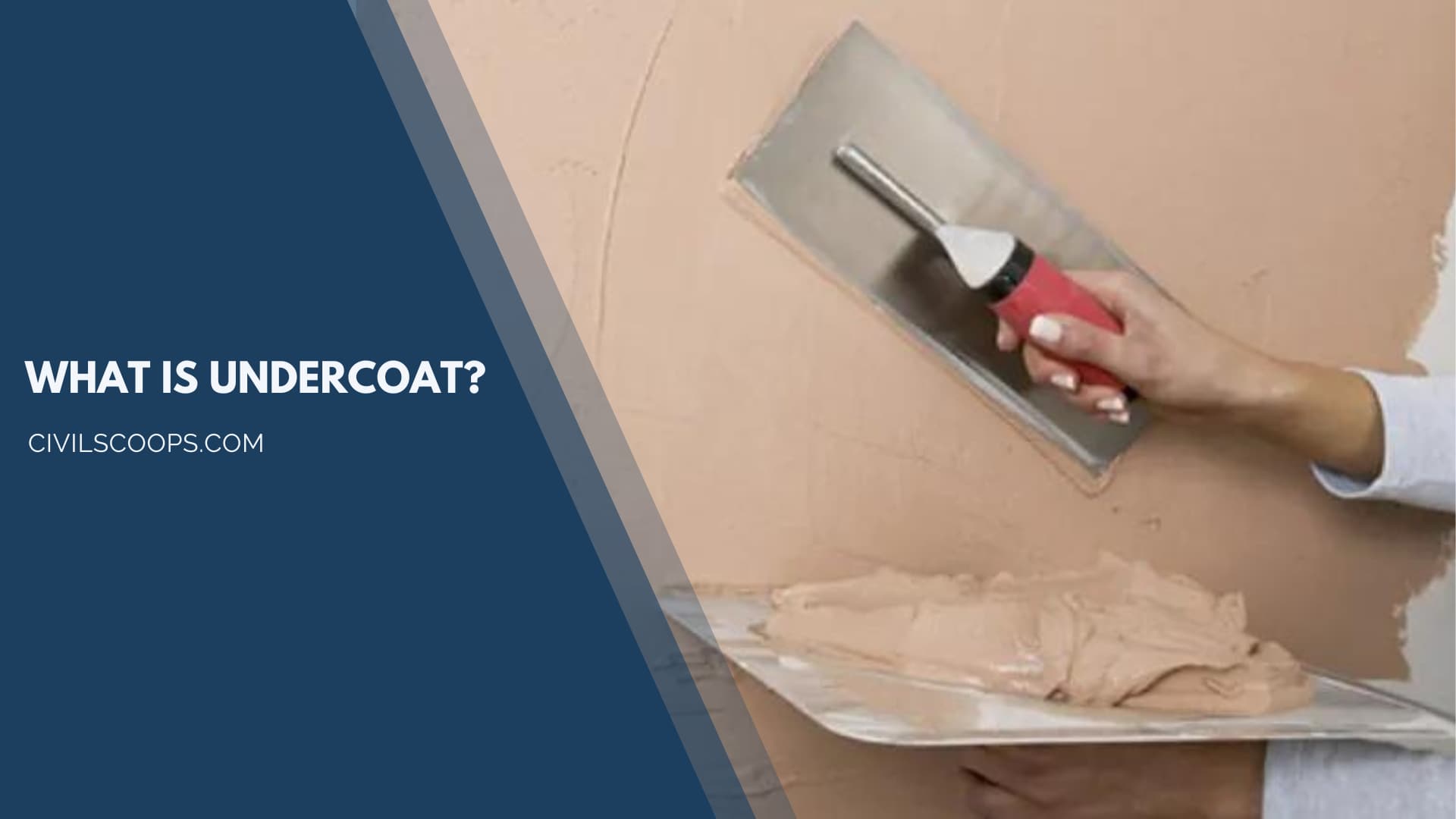
Undercoat paint is a layer which is applied on the surface after priming and before painting the surface. The undercoat is the second stage of painting which is applied to the coat of primer.
There are different types of undercoat which are used on various surfaces such as metal, wood and plastic board. Undercoat paint is the second stage of application of coat on the surface of the wall.
Undercoat paint protects from the external elements and helps to achieve a uniform base for the application of topcoat on the surface.
What Does Undercoat Paint Do?
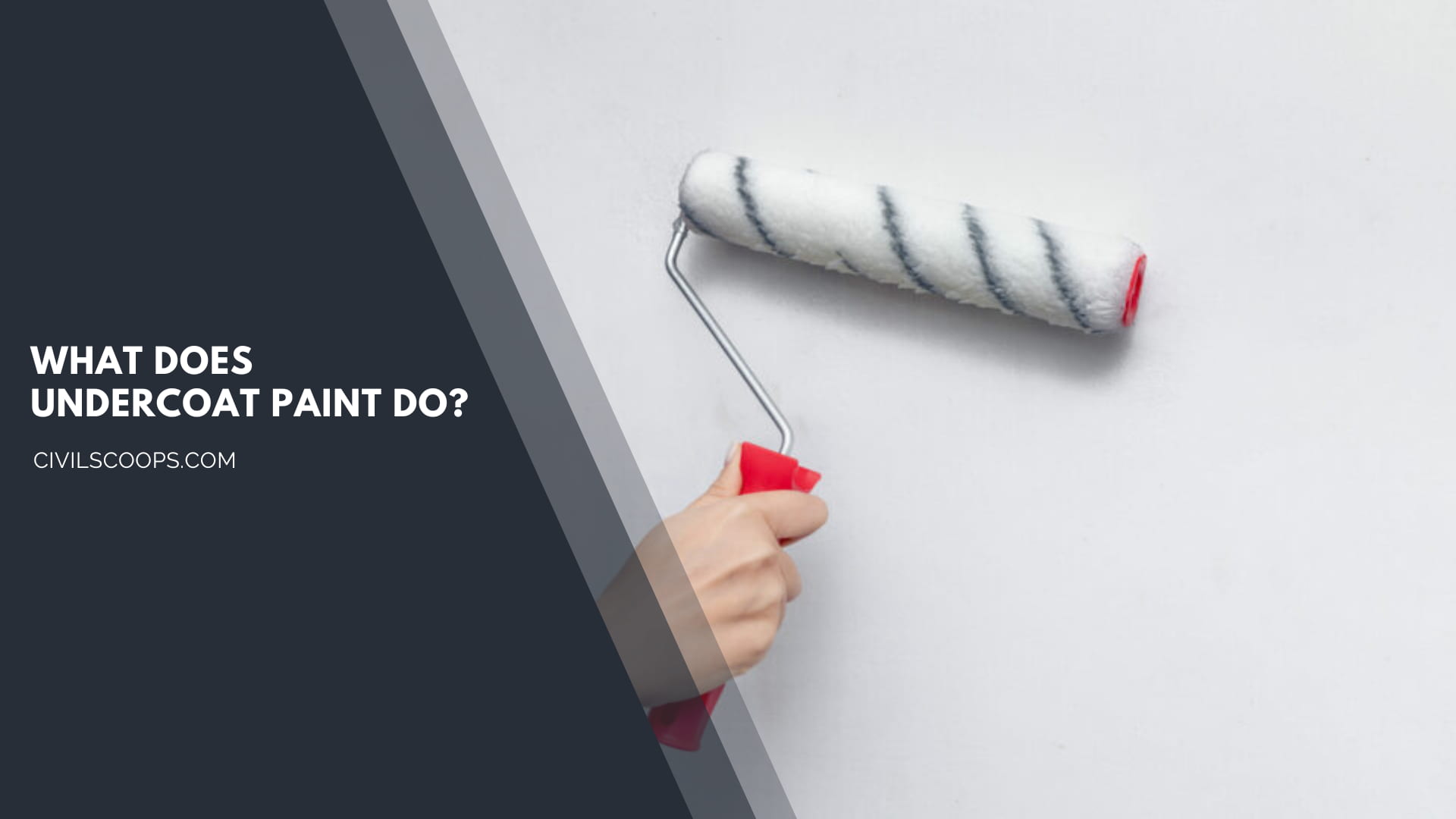
There are many advantages to using undercoat paint. The process of applying undercoat paint helps to achieve the best painting results when the surface is properly prepared.
The Undercoat paint helps to protect the surface by providing a protective film to the base. Undercoat protects from external elements such as moisture and aggressive environmental conditions.
The undercoat ensures the even coverage on the surface which will help to achieve uniform paint on the surface. All the uneven space or the spots are covered by applying undercoat paint.
The undercoat is very beneficial to fill the gaps or are voids on the surface and achieve the uniform paint on the surface of the wall.
Also Read: What Is Plaster | Types of Plaster As Per Material | Defects In Plastering
Why Use Undercoat?
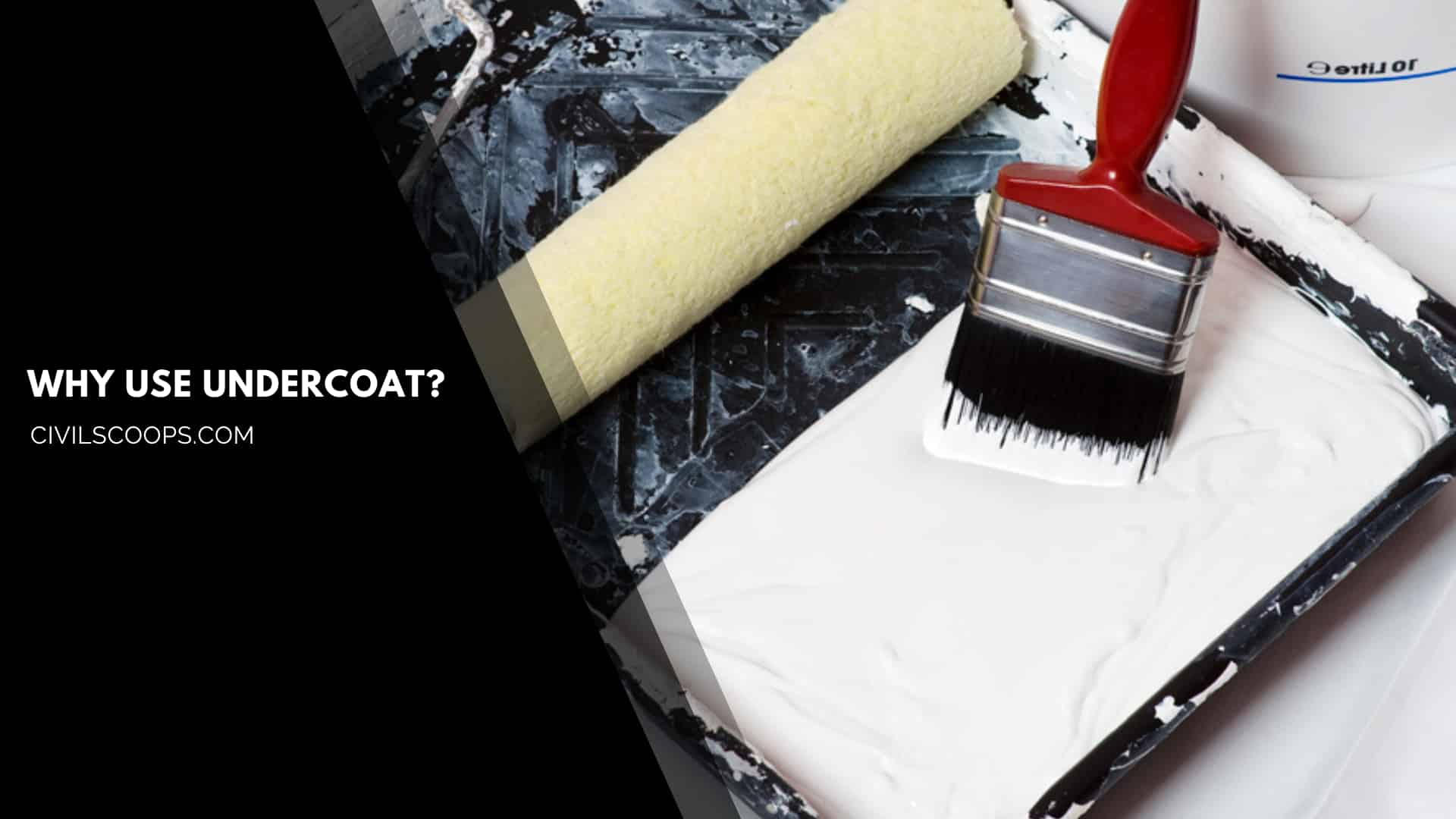
The undercoat is very important to fill the minor imperfections to create a smooth even surface which is ready for the application of the final coat or the topcoat.
It undercoat can be applied to any surface which has to be painted. It is very necessary to use undercoat for the surface because it helps to provide a uniform even surface for the application of the final coat which will give a quality finish to the surface.
Functions of the Undercoat
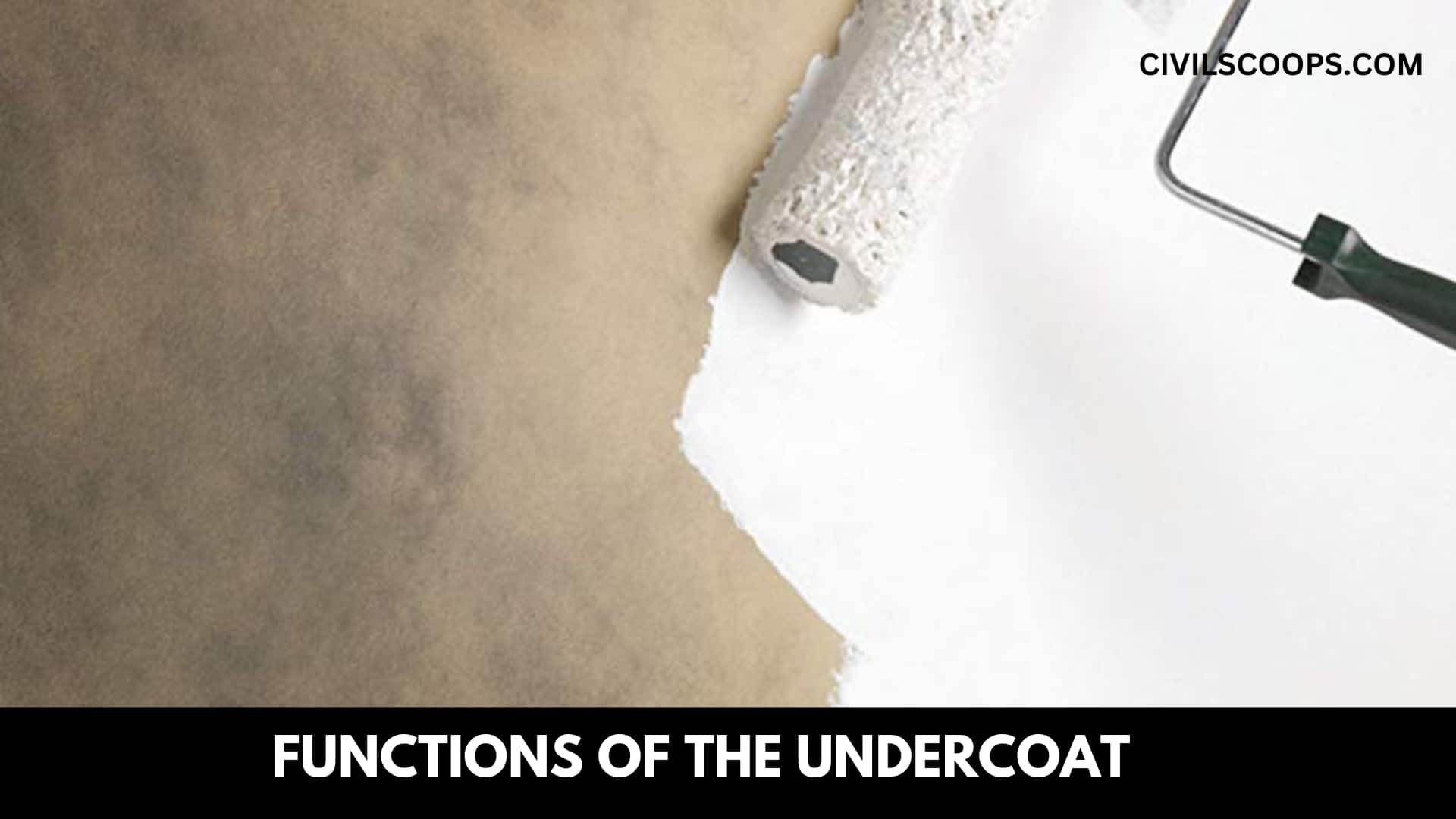
The functions of undercoat are as follows
- Undercoat paint provides a base that the topcoat will stick to.
- Undercoat provides a good addition to the primer.
- Undercoat provides a pin which will make a barrier to prevent the moisture and other natural elements.
- Undercoat helps to fill out the small imperfections in the of surfaces.
- Undercoat switch are you for the timbers are generally used to provide the filling properties and smoothness to the surface.
Functions of the Primer
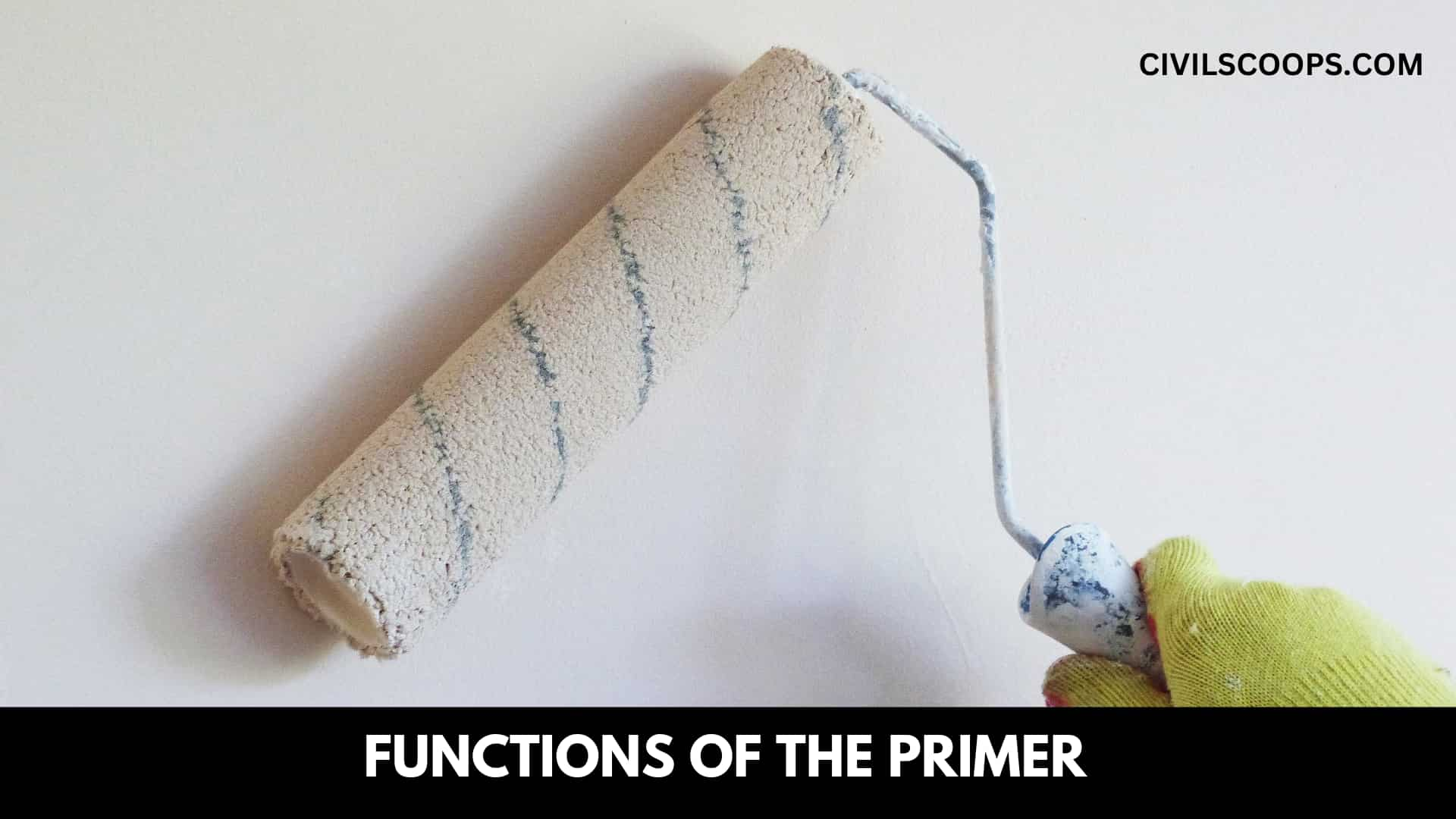
- The main function of the primer is to protect the substrate.
- It may also help to provide adhesion to the non-ferrous metals.
- Primers are used to seal the surface and prevent the entry of moisture.
- Primers help to prevent the steel surface from the rusting.
Is Undercoat the Same as the Primer?
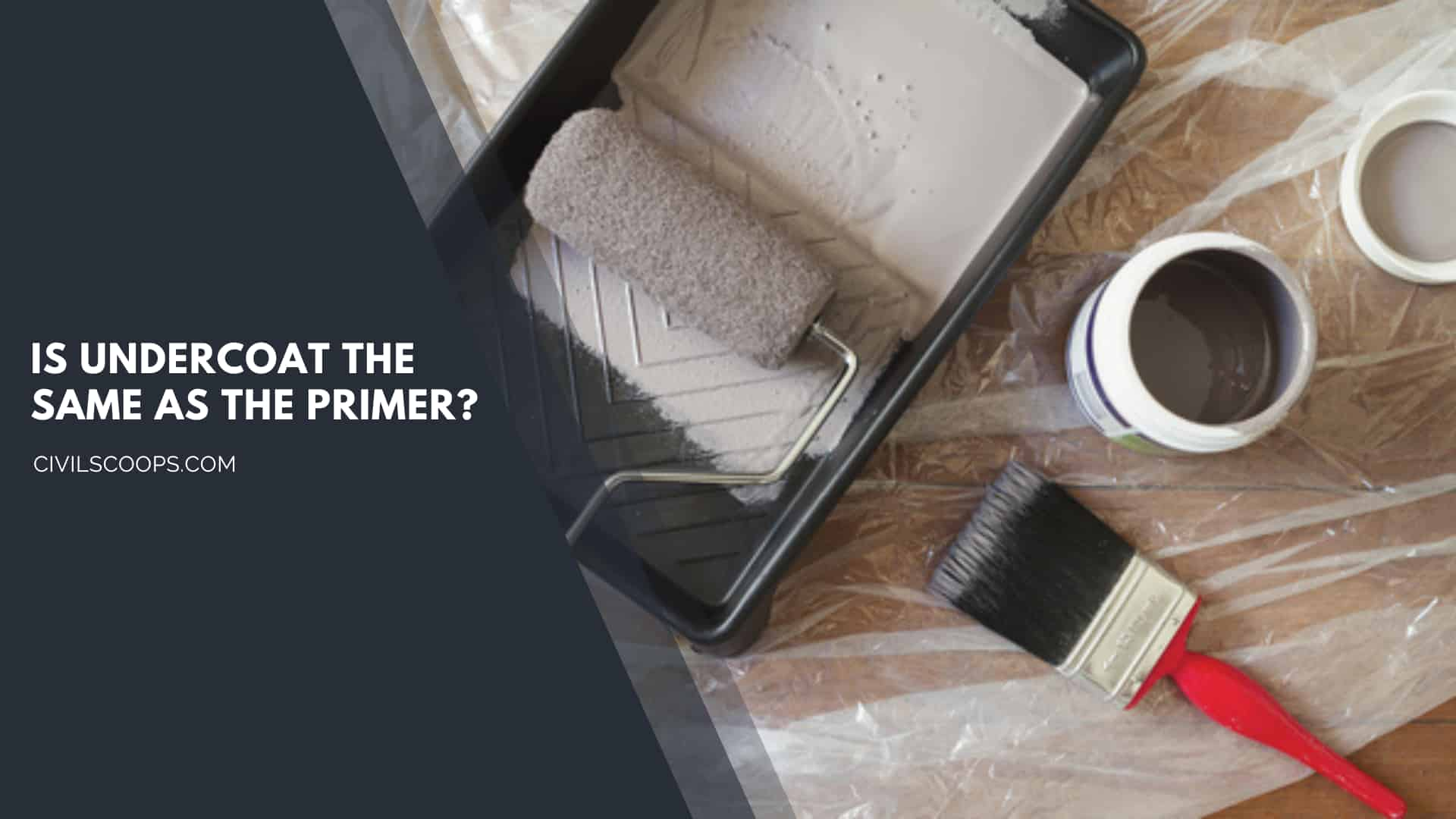
- It is the common question which arises in the mind of many people whether undercoat is the same as the primer.
- Here we highlight some of the main points which will clear the whole concept of primer and undercoat.
- The Undercoat and the primer both play a vital role before the application of the paint to the surface. The undercoat and primer are both plays a crucial role in providing a quality finish coat to the surface.
- The word primer derives from the Latin word ‘prim’ which means first. The undercoat and primer both are used to prepare the surface for the painting.
- Primer is the first coat which is used on the bare surfaces while the undercoat is the second coat of the paint which is provided on the wall over the primer.
- Primer gives the paint a good base which will form a strong bond to stick to undercoat and improves the overall appearance.
What Is the Difference Between Primer and Undercoat?
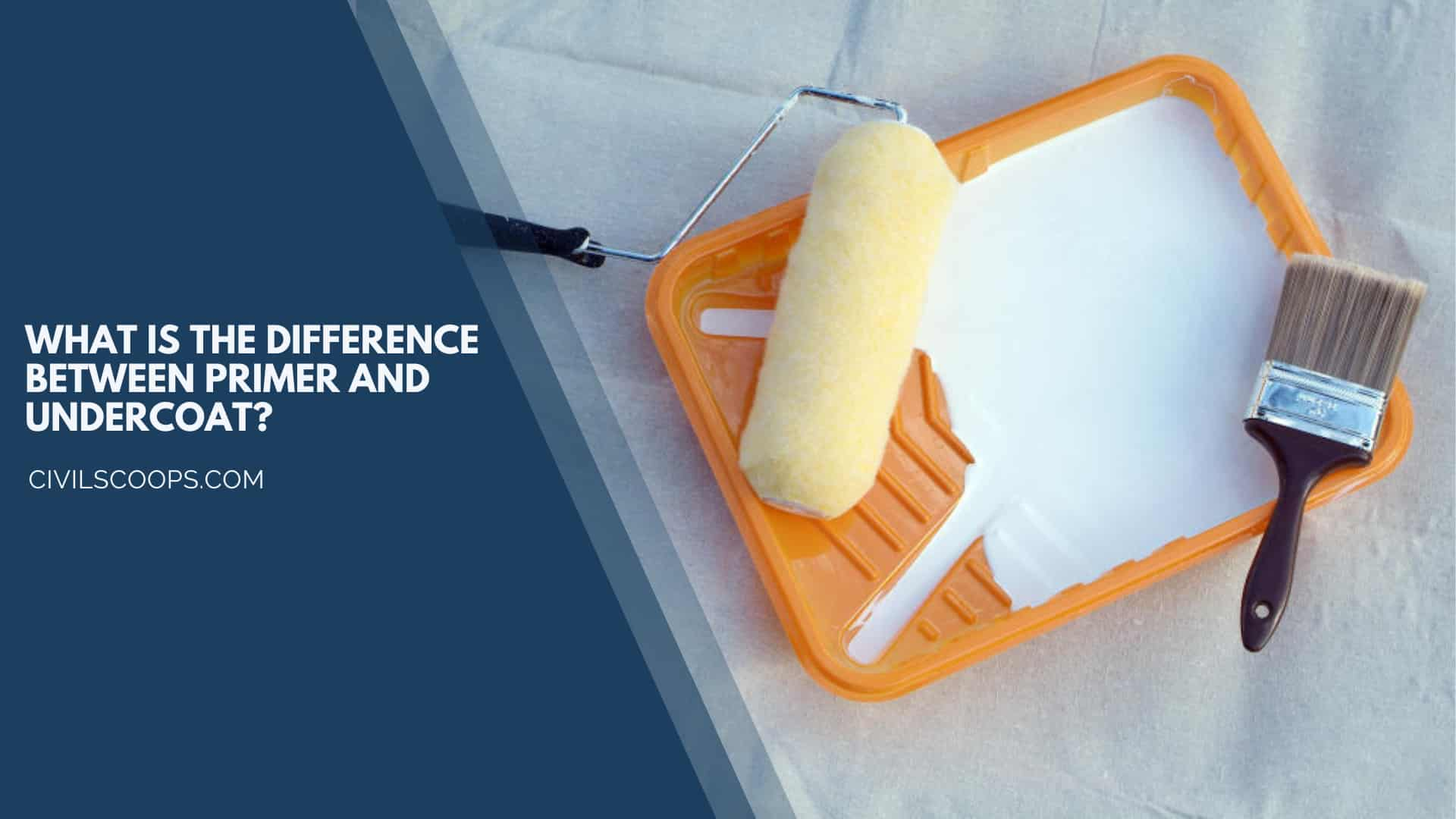
The difference between primer and undercoat are as follows
Primer is the precoat or the first coat which is applied on the surface of the where the painting is to be done. While the undercoat is the second coat which is applied over or the application of primer.
The primer works to hide the stains and helps to prevent the discolouration. Primer is very necessary and important to use when we have to change the colour from dark to the light one.
Primer is used to seal and protect their surfaces such as plaster and wood. The undercoat is used on the surface which is already painted.
The undercoat is the second coat which is provided on the surface before the application of the final coat.
Undercoat paint is a subset of the primer. The Thumb Rule which is generally used is that if the surface is new then we have to use a primer to paint that surface.
If the painting has to be done on the old surface which is already painted then apply the undercoat on that surface.
The primer cannot be used as the last coat on the surface, but the undercoat can be used as the last coat on the surface of the wall.
How Many Coats of Undercoat?
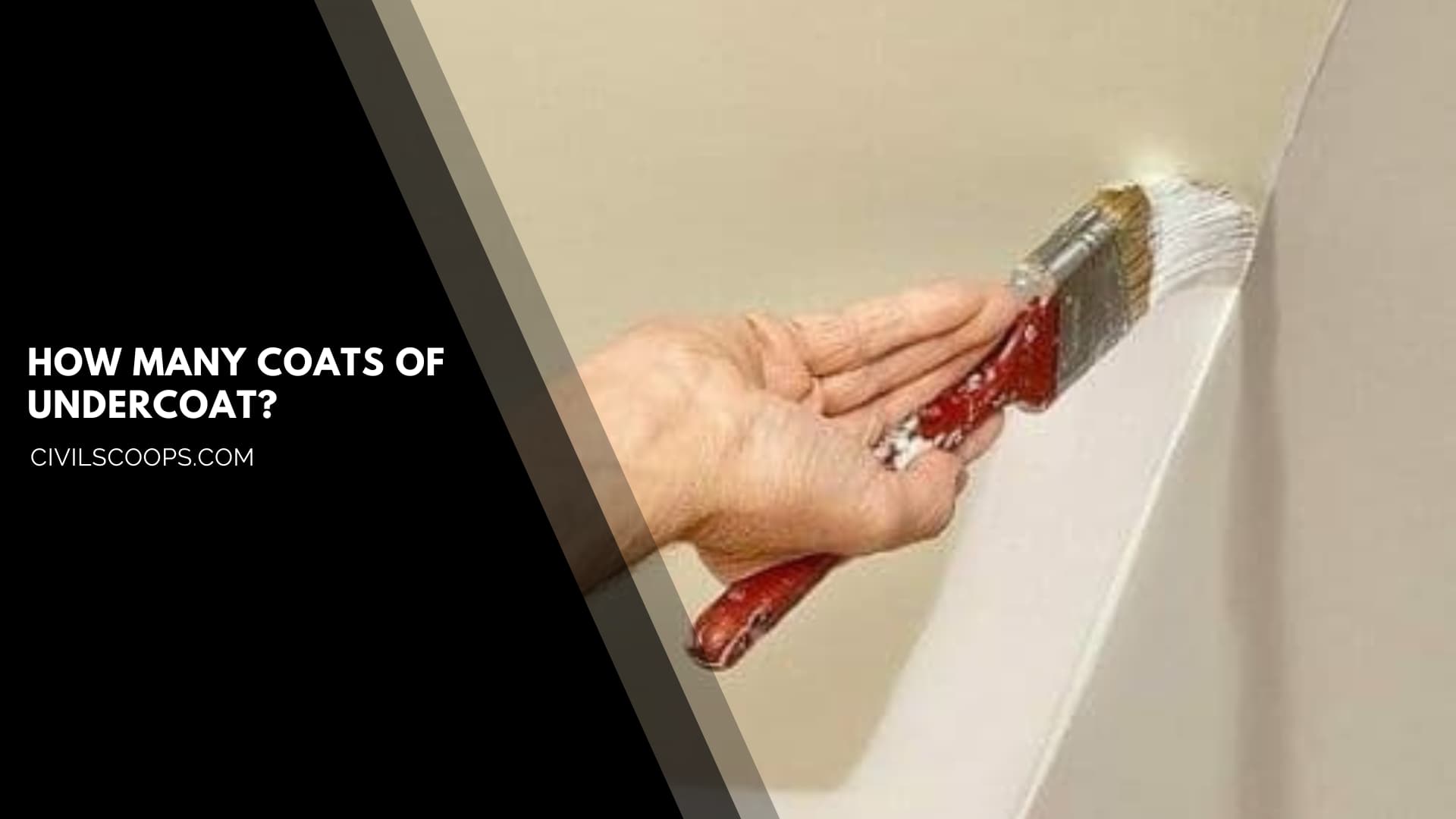
The process of the application of the Undercoat is as follows
Step 1: To achieve the quality finish to the surface, it is very important to prepare the surface properly before the application. The surface should be scrap with the help of sandpaper creasing the uneven elevations.
Step 2: Clean the surface properly and remove the dust and moisture.
Step 3: After the process of scraping and cleaning of the surface the primer is applied on the surface where the paint how to be done.
Step 4: After the surface will be completely clean and dried apply the undercoat.
Step 5: Now applied the final coat of the paint to the surface.
Also Read: What Are Defects in Painting | 18 Types of Defects in Painting | How to Prevent Defects in Painting
[su_box title=”Short Note” style=”default” box_color=”#333333″ title_color=”#FFFFFF” radius=”3″ class=”” id=””]
Undercoat
An undercoat is a coat of paint that is applied before the final layer of paint. It may also be referred to as the primer coat. An undercoat is a layer of paint that is used to prepare a surface before the topcoat is applied.
What Does Undercoat Paint Do?
An undercoat is used after a primer. It is used to fill any minor imperfections to create a smooth, even-coloured surface ready for the application of the topcoat. An undercoat also assists to lighten a surface when changing from a dark to a pale colour.
Is Undercoat the Same as the Primer?
Primer is used to seal and protect bare surfaces like wood and plaster. You can buy a combined primer/undercoat but for outdoor items, it’s worth applying a separate primer and undercoat to protect them. An undercoat is used on a surface that’s been painted or primed.
How Many Coats of Undercoat?
A couple of coats will be needed Zinsser BIN primer is available. if some filling required use caulk, 2 coats undercoat and 1 coat of satinwood. That would be a nice finish. After every coat of undercoat, primer need to standing down.
[/su_box]
[su_box title=”FAQ” style=”default” box_color=”#333333″ title_color=”#FFFFFF” radius=”3″ class=”” id=””]
What Is Acrylic Primer Undercoat Used For?
A good sanding, fast drying undercoat/sealer exhibiting excellent adhesion. Suitable for binding of cementitious surfaces. TYPICAL USES: Interior/exterior sealing and undercoating plasterboard, wall board, particle board, chip board, fibre cement boards, concrete and old paint work.
What Is Undercoat Paint Used For?
An undercoat prepares an even surface for painting. Undercoat is traditionally a separate layer, formulated to provide the best surface for the desired topcoat; promoting good adhesion, depth of colour, flatness and longevity. Painting a base layer ensures that your chosen colour can be achieved in fewer coats.
Undercoat
A layer of paint applied after the primer and before the topcoat.
What Is the Difference Between Primer and Undercoat?
Primers act as a foundation for your paint to stick to while undercoats create a flat and level base for topcoats. One easy way to remember is if a surface is painted use an undercoat, if it’s new, use a primer.
Do You Need an Undercoat When Painting Walls?
It’s essential to use the correct primers and undercoats to allow paint to do its job properly. Undercoat is often required to seal unpainted surfaces or prepare the surface for painting.
How Many Coats of Undercoat on Walls?
No need to undercoat emulsion on walls , but you should be prepared to cut in the edges 3 times, and apply at least 2, possibly 3 coats overall, depending on your brush, technique, surface and paint. But don’t think you need to buy in a special tin of primer for the first coat.
How Many Undercoats on New Plaster?
When it comes to painting over new plaster, you’ll technically want three coats of paint – our two recommended coats plus a mist coat.
What Is Wall Primer?
A wall primer provides a smooth and even surface for the paint layer to go on top. Applying a wall primer helps the paint adhere to the wall better, and improves the durability and longevity of the paint coat.
What Does Wall Primer Do?
Covers imperfections such as areas of your wall that may have been patched or repaired. Blocks and conceals stains so they don’t bleed through your newly painted finish. Provides a uniform surface for your paint to stick to.
Is Undercoat the Same as Primer?
Although similar, both serve quite different functions. Primers act as a foundation for your paint to stick to while undercoats create a flat and level base for topcoats. One easy way to remember is if a surface is painted use an undercoat, if it’s new, use a primer.
Is Primer Necessary for Painting Walls?
Without primers, it is hard to achieve the perfect finishing. The primer provides a strong base so that the topcoat will bond to. The benefits of priming walls are many, including long-lasting, better protection, and stronger adhesion between painted walls. No surface that won’t be benefited from being primed.
How Much Primer Do I Need to Paint a Room?
A gallon of primer will cover between 250- to 400-square feet of surface. Two coats may be needed over heavy stains or tannin-rich wood. Most primers can be tinted to help ensure good coverage for the finish coat.
How Much Primer for New Drywall?
Two primer coats are recommended in this scenario because much of the first primer coat will be soaked up by the wall; the second coat will replenish any primer absorbed by the surface and hide any flaws in the wall.
How Much Primer Do I Need for New Drywall?
You will want to use 2-3 coats of primer to ensure there is a good bond between the new paint and the wall, and also to cover up any previous colors, especially if they are red, orange, or a strange outdated color. In short, you will typically need 2 coats of primer for most painting projects.
[/su_box]
[su_note note_color=”#F2F2F2 ” text_color=”#333333″ radius=”3″ class=”” id=””]
Like this post? Share it with your friends!
Suggested Read –
- What Is Window Glazing | Types of Window Glazing
- What Is Septic Tank | How Does A Septic Tank Work | Septic Tank Design based Per User Consumption
- What Is Folded Plate | Folded Plate Structure | Folded Plate Roof Construction Details | Folded Plate Staircase | What Are Folded Plate Roofs
- All About Brick Bat Coba | What Is a Brick Bat Coba | Procedure of Brick Bat Coba Waterproofing | Advantages & Disadvantage of Brick Bat Coba Waterproofing
- What Is Shotcrete | Shotcrete & Concrete | Shotcrete Technology | Types of Shotcrete Technology | Advantages of Shotcrete | Disadvantages of Shotcrete
[/su_note]
Originally posted 2023-03-27 11:56:46.
